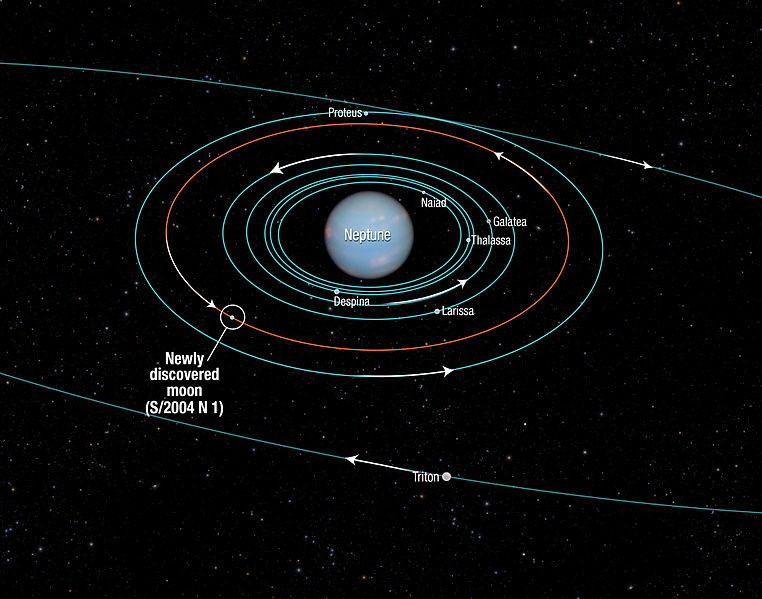
The Hubble space telescope is still making amazing discovery’s 13 years after its launch into space. It has now enabled astronomers to discover a new moon orbiting Neptune. This is the 14th known the moon to orbit the giant blue planet and has been named S/2004 N 1.
It appears, however, to be a very small moon indeed, it’s the smallest known moon in the Neptunian system, measuring just 20 km (12 miles) across, completing one orbit around Neptune every 23 hours.
It was the US astronomer Mark Showalter who spotted the tiny moon while studying segments of rings around Neptune using Hubble images. Its small size is probably the reason to why the Voyager spacecraft failed to spot it in 1989 when it passed close by Neptune and surveyed the planet’s system.
As Mr. Showalter explained, “The moons and arcs orbit very quickly, so we had to devise a way to follow their motion in order to bring out the details of the system,”, “It’s the same reason a sports photographer tracks a running athlete – the athlete stays in focus, but the background blurs.”
______________
NASA Hubble Finds New Neptune Moon/
____________________________






















